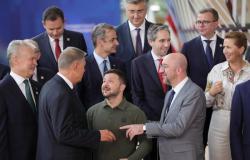According to Natasha Fielding of Argus Media, “maintaining a single European gas market will be more expensive from now on. Europe must reconsider how these additional costs are incurred, otherwise market fragmentation may be inevitable.”
The European gas market has proven far more resilient to the major political and security challenges it has faced since Russia’s invasion of Ukraine than many would have imagined. Just two years ago, abandoning Russia’s pipeline habit seemed almost impossible. However, the EU is not out of the woods yet and in the future – writes Natasha Fielding, head of European gas prices at Argus Media in the Financial Times – maintaining the single gas market in Europe will probably cost much more.
THE RISK OF THE VICIOUS GAS CIRCLE IN EUROPE
The EU system has already had to reconfigure itself due to the loss of its largest source of supply. And, as the transition from gas to greener alternatives gathers pace, a shrinking group of remaining customers will have to shoulder the costs of maintaining oversized gas networks.
To address these and other challenges, some network maintenance costs may need to be borne differently. Europe needs a way to avoid finding itself in a vicious cycle, in which system charges continue to have to increase because there are fewer users to pay them.
GERMANY’S GAS TAX
Two years ago, European businesses and governments acted with remarkable speed to build enough floating LNG terminals to replace lost Russian supplies. As a result, the continent avoided gas rationing and market prices returned to pre-crisis levels after just 12 months.
The most controversial new cost expected for 2022, however, was Germany’s so-called “storage tax.” The country introduced this new tax on all gas leaving the grid as a way to offset the multibillion-dollar losses the government incurred by buying gas at record prices two years ago to fill storage. The German withdrawal currently stands at €1.86/MWh, and will increase to €2.50/MWh from the beginning of July. The German government, however, announced last Thursday that it intends to abolish the tax starting from the beginning of 2025.
THE NEW STRATEGIES OF EUROPEAN TRANSPORT NETWORK OPERATORS
Meanwhile, operators of European gas transmission networks – which supply pipelines across the continent – must rethink their revenue models, in a world where Russian gas no longer flows through the system. So-called transmission system operators (TSOs) in the Czech Republic, Austria and Slovakia are all planning to increase tariffs for transporting gas through their systems, to cover lost transit revenue from Moscow.
These additional transportation costs will make it more expensive to ship gas south and west to central Europe. Shippers are already doing what they can to avoid transporting gas through Germany, the main route for LNG to reach landlocked eastern markets. When companies cannot avoid the German route, the local price at the final destination must be significantly higher than the German one, to attract imports.
As a result, cross-border trade opportunities are drying up, meaning that flexible resources, such as storage sites, are now underutilised, and developing markets such as Ukraine struggle to integrate into the European network. For example, this summer traders do not have as much incentive to store gas in Ukraine as they did in the past, because the spreads between summer and winter prices are too narrow to cover even half the cost of transporting it from Austria to ‘Ukraine and back.
SOLUTIONS TO MAINTAIN A SINGLE EUROPEAN GAS MARKET
There are several possibilities. For example, greater support could be provided to TSOs in former Russian transit countries. The European Union could consider creating “a bad TSO” of its own, such as a bad bank, which could own and pay for capacity that the market no longer needs, but which has not yet been completely dismantled. Downsizing the subsidized network in places that transported a lot of Russian gas could also be part of the solution. In the other direction, perhaps there should be a tariff exemption for companies using new or repurposed pipelines between LNG terminals and landlocked countries.
Network tariffs are a useful way to spread costs across the industry. System usage is usually a good indicator of market share and therefore the amount of market maintenance costs a company would have to pay. Some costs, however, could be better recovered in other ways, to prevent network tariffs from discouraging the kind of behavior the EU wants to promote, for example by transporting more LNG inland from the coasts. As Europe increases its LNG import capacity, maintaining a limited difference in market price between the coasts and the interior will require low-cost pipeline capacity.
In conclusion, maintaining a single European gas market, which has never been free, will be more expensive from now on. Europe must reconsider how these additional costs are incurred, otherwise the fragmentation of its markets may be inevitable.





